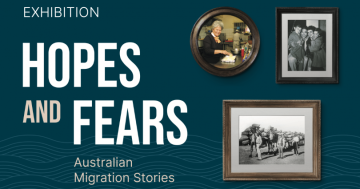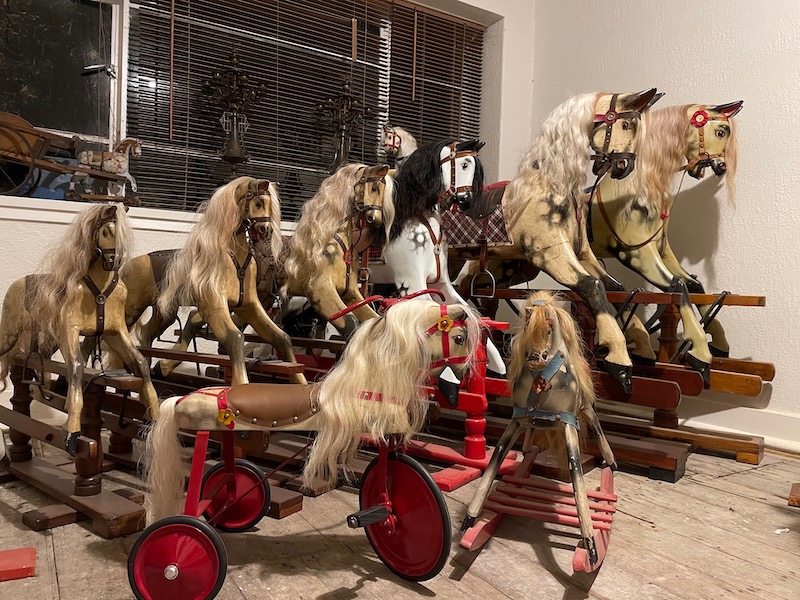
Australian Roebuck rocking horses line up in the Fouracres’ home. In the foreground are a Roebuck/Cyclops pedal pony and a colt rocker. Photo: Bronwyn and David Fouracre.
Eleven years ago, two public servants resettled in an 1850s homestead near Goulburn. Fed up with the delays and dangers of travelling from Yass on the Barton Highway to Canberra, Bronwyn and David Fouracre had no inkling of how the move to Goulburn would change their lives.
“As we were unpacking some boxes, all I could think about was getting an old rocking horse to sit in one of the front rooms,” Bronwyn said. She tracked down an antique rocking horse, then another and before they knew it, the Fouracres had joined a small community of obsessive collectors.
Hankering for rare old rocking horses opened a window for Bronwyn on the world’s industrial and commercial history. She learned what made a horse collectable and how to tell whether a horse had been ridden every day by a small child (the left ear is worn from being held while the rider climbs into the saddle). Meanwhile, David, a mechanic by trade and enchanted by early rocking horses’ fine craftsmanship and amazing history, kept his head during their hunt and haggling for a prized horse.
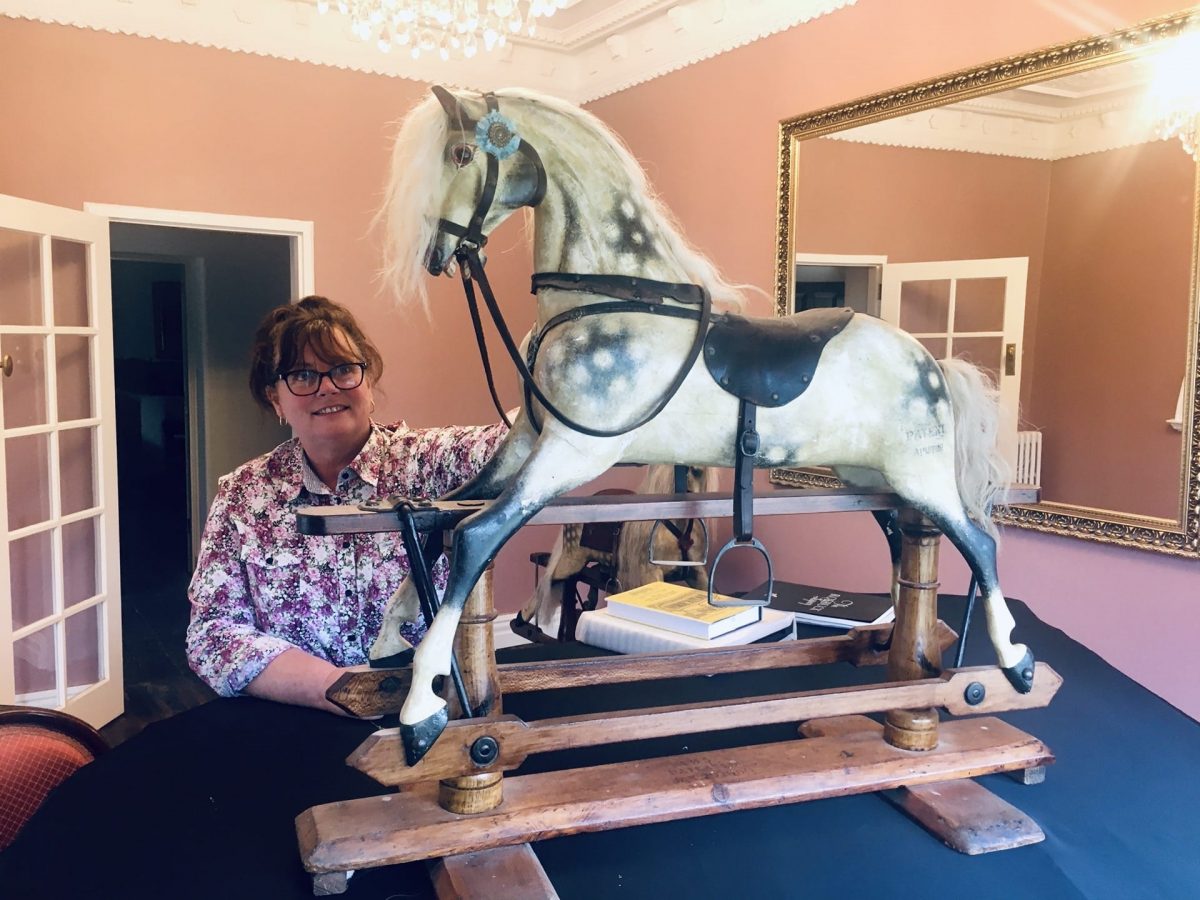
Bronwyn Fouracre admires Benny, an 1887 Ayres rocking horse with a movable head. Photo: John Thistleton.
Leading their collection are ”Benny” and ”High Jinks”, who hail from an early era when artists hand-carved horses with beguiling detail.
Airfreighted out of England in a special crate, Benny arrived at Sydney Airport in 2014 as his excited new owners fought to contain their nerves. One of only eight of his kind worldwide, Benny was made in 1887 in London by F.H. Ayres, an innovative toymaker who gave his early horses movable heads. In subsequent years, many of the heads came off and were screwed back on, losing their movable feature.
But remarkably, more than a century later, Benny’s head still turns. The Fouracres are impressed with any rocking horse in England having survived two world wars, given the extensive bombing in World War II.
“The rocking horse was the last thing people were trying to protect in the bunker,” David said.
Benny’s horsehair mane remains intact, too.
“Because they have horsehair, oh my God, can that create problems through quarantine,” Bronwyn said. “I’m just lucky David is so stoic because I would lose it talking to (quarantine officers). Often you will get some untrained quarantine officer saying, ‘We have to destroy this – animal product coming into Australia’.”
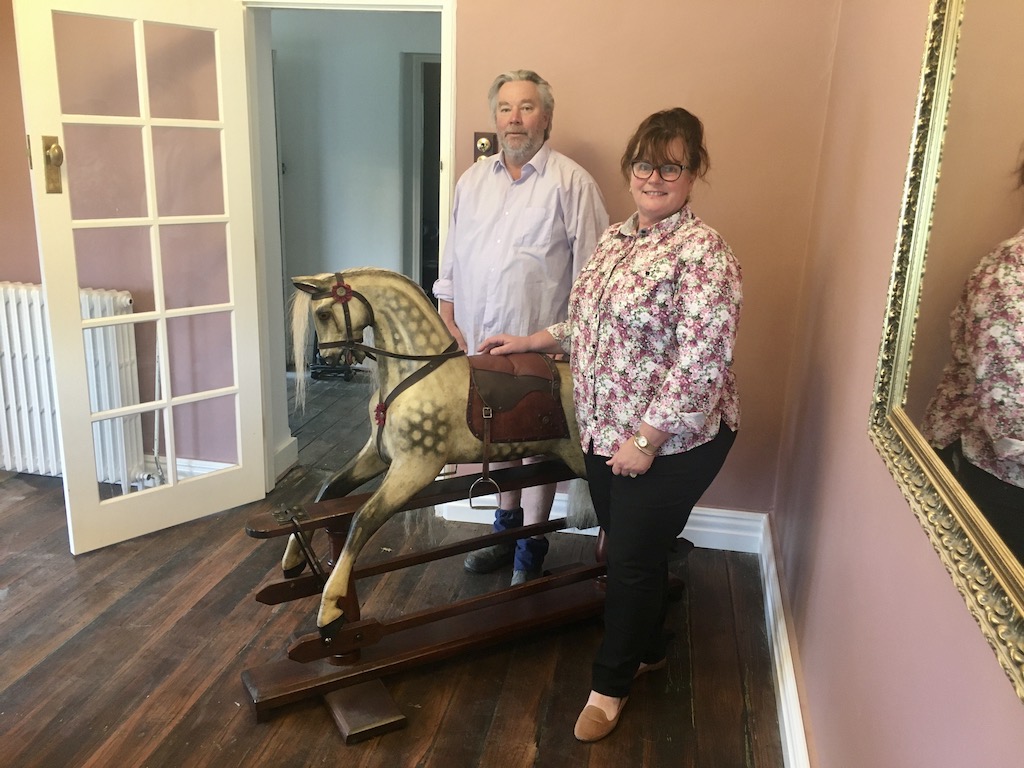
David and Bronwyn with an early Ayres rocking horse. Photo: John Thistleton.
They bought Benny sight unseen, trusting the British collector who, like them, would be aware of the litigation that erupted over previous cases of misrepresentation of rocking horses. They also had bought a horse previously from this collector, who had two of the Ayres horses and wanted to trade one to fund his switch to 1800s French and German horses.
Benny’s ”stablemate”, High Jinks, is a big bow rocker G & J Lines horse from the 1900s.
“As soon as we saw him, we just loved him, we feel honoured he is here with us,” Bronwyn said.
Part of High Jinks’ appeal is his sympathetic restoration by David Kiss, an English master craftsman.
Bronwyn says securing a rare rocking horse is like winning the lottery.
“I think the addiction is there because you are protecting, I guess, history,” she said. “Each one of these horses has had a lifetime of uses.”
Some had a number carved on their forehead to record a particular worker’s output. Some have side saddle pegs that were used to train young children to ride.
Among the collection are 10 Australian Roebuck horses, three from G & J Lines’ ”stable” and five from the revered Ayres collection, plus a little tricycle rocking horse whose maker the Fouracres are unwilling to attribute (due to the risk of litigation for misrepresentation). They have another pull-along rocking horse that could be a G & J Lines or an early Roebuck.
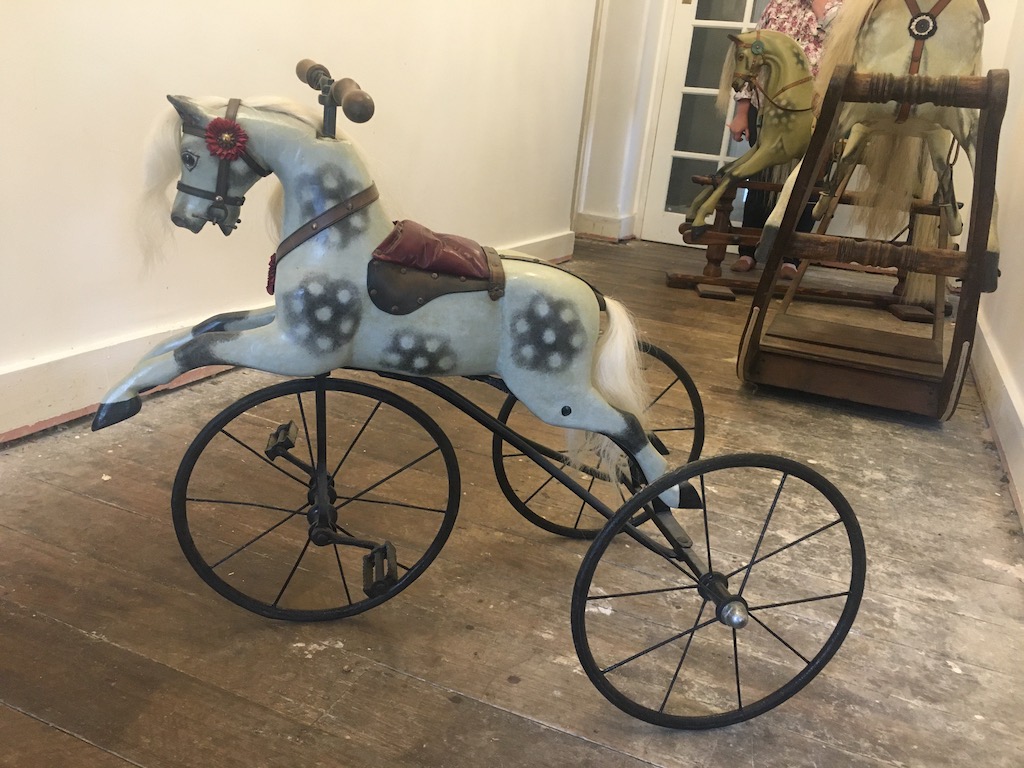
A Cooper 1900-1915 tricycle is one of several unusual rocking horses that are on wheels or bow-shaped springs from early coaches and cars. Photo: John Thistleton.
“The earlier Australian horses are actually very difficult to find,” Bronwyn said. “They were manufactured as children’s toys, so they were left out on verandas. The little tricycles that you see even from the 1930s were left outside under the Hills Hoist in the rain and Australian sun. They deteriorated very quickly. It’s rare to find an earlier example that is salvageable.”
Some rocking horses joined the Fouracres’ collection through sheer luck. David walked through The Green Shed recycling centre in Canberra and spotted one, and so, like all the other horses, its safekeeping is now assured.
Original Article published by John Thistleton on About Regional.











